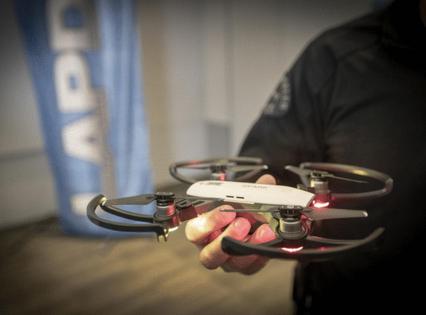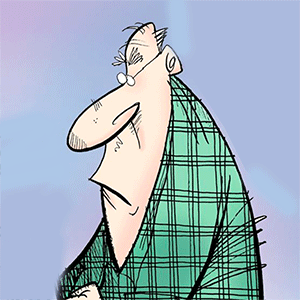LAPD allowed to use drones as 'first responders' under new program
Published in News & Features
LOS ANGELES — Citing successes other police departments across the country have seen using drones, the Los Angeles Police Commission said it would allow the LAPD to deploy unmanned aircraft on routine emergency calls.
The civilian oversight body approved an updated policy Tuesday allowing drones to be used in more situations, including "calls for service." The new guidelines listed other scenarios for future drone use — "high-risk incident, investigative purpose, large-scale event, natural disaster" — and transferred their command from the Air Support Division to the Office of Special Operations.
Previously, the department's nine drones were restricted to a narrow set of dangerous situations, most involving barricaded suspects or explosives.
LAPD Cmdr. Bryan Lium told commissioners the technology offers responding officers and their supervisors crucial, real-time information about what type of threats they might encounter while responding to an emergency.
Officials said there is strong community support for the expanding use of drones to combat crime — and offered reassurances that the new policy will not be used unconstitutionally.
Tuesday's vote clears the way for a pilot program set to launch next month at four police divisions — Topanga, West L.A., Harbor and Central — spread across the department's four geographical bureaus. The Commission asked the department to report back within six months on the program's progress.
Commissioner Rasha Gerges Shields said the old policy was understandably "very restrictive" as the department was testing out what was then an unproven technology. But that left the LAPD "behind the times" as other agencies embraced drones, she said.
The commissioner pointed to the city of Beverly Hills, where police have been quick to adapt cutting-edge surveillance technology. Sending out a drone ahead of officers could help prevent dangerous standoffs, informing responding officers whether a suspect is armed or not, according to Gerges Shields, who served on an internal work group that crafted the new policy.
Commissioner Teresa Sanchez Gordon turned a more skeptical eye to the issue, saying the new policy needed to protect the public. She asked whether there were clear guidelines for how and when the devices are deployed during mass demonstrations, such as the ones that have roiled Los Angeles in recent weeks.
"I guess I just want to make sure that the recording of these activities will not be used against individuals who are lawfully exercising their rights," she said.
The updated drone policy allows for the monitoring of mass protests for safety reasons, but department officials stressed that it will not be used to track or monitor demonstrators who aren't engaged in criminal activities.
Equipping the drones with weapons or pairing them with facial recognition software is still off-limits, officials said.
The footage captured by the drones will be also subject to periodic audits. The department said it plans to develop a web portal where members of the public will be able to track a drone's flight path, as well as the date, time and location of its deployment — but won't be able to watch the videos it records.
Critics remain skeptical about the promises of transparency, pointing to the department's track record with surveillance technology while saying they fear police will deploy drones disproportionately against communities of color. Several opponents of the program spoke out at Tuesday's meeting.
The devices vary in size (2.5-5 lbs) and can cover a distance of two miles in roughly two minutes, officials said.
Expanding the role of drones has been under consideration for years, but a public outcry over a series of high-profile burglaries on the city's West Side sparked an increased push inside the department.
The drone expansion comes amid a broader debate over the effectiveness of the department's helicopter program, which has been criticized for being too costly.
In adopting the new guidelines, the department is following in the lead of smaller neighboring agencies. In addition to Beverly Hills, Culver City and Chula Vista that have been using drones on patrol for years and have more permissive regulations.
LAPD Cmdr. Shannon Paulson said that new policy will give the department greater flexibility in deploying drones. For instance, she said, under the old policy, a drone could normally only be dispatched to a bomb threat by a deputy chief or above who was at the scene, which led to delays.
_____
©2025 Los Angeles Times. Visit latimes.com. Distributed by Tribune Content Agency, LLC.







Comments